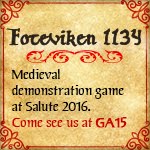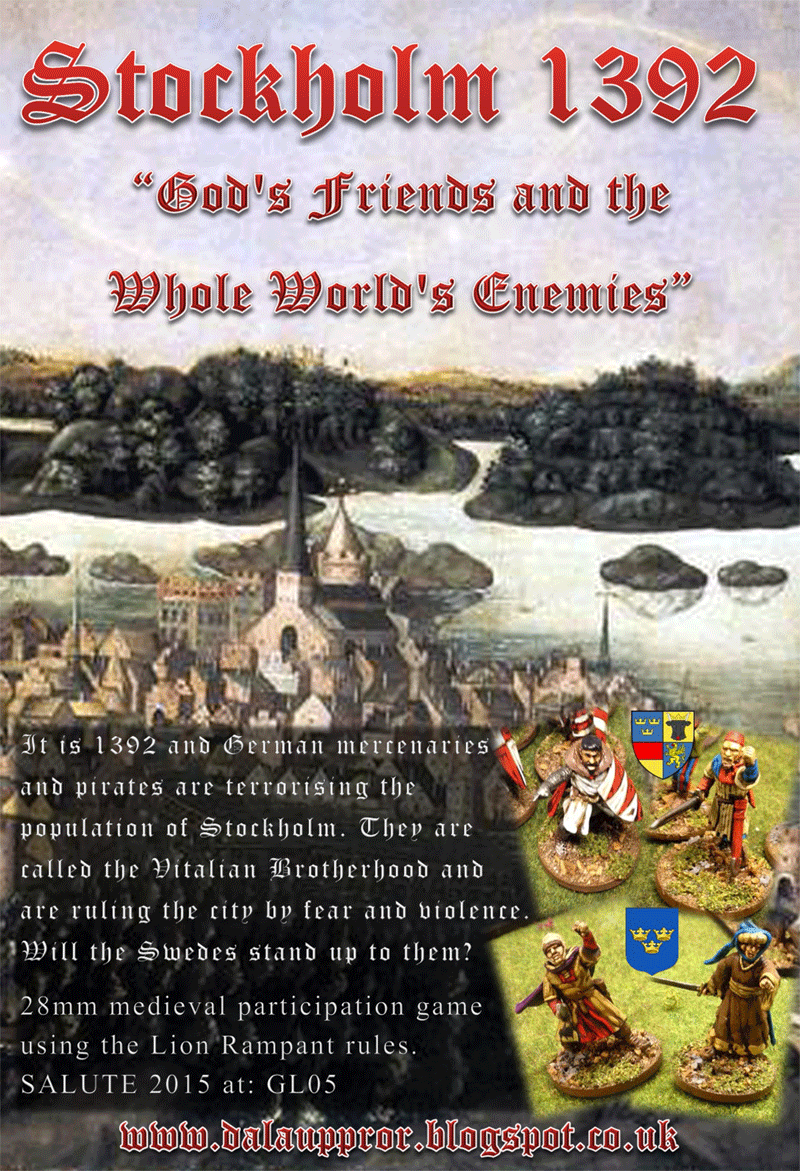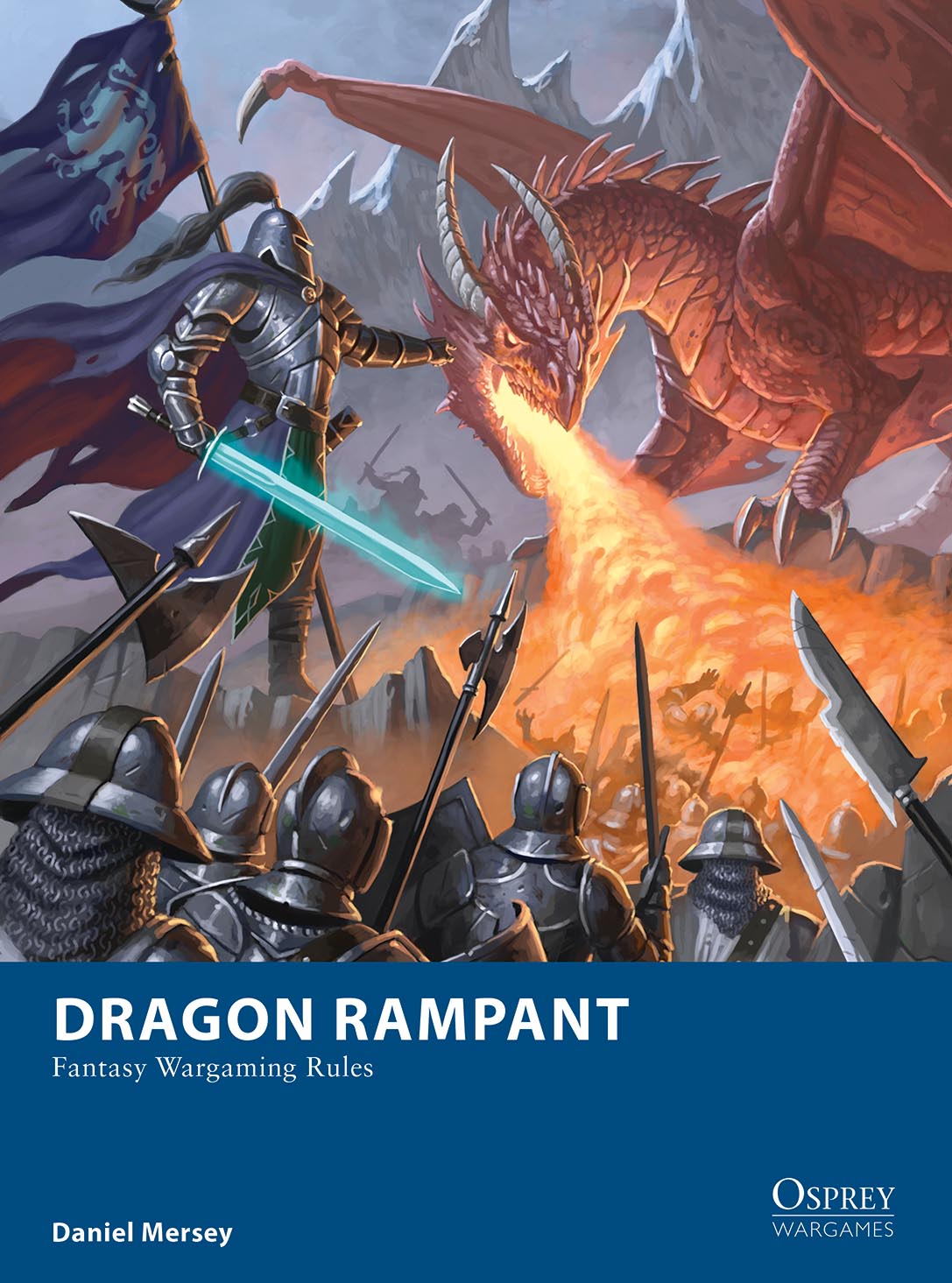28mm Big-Based Ancients
By Rickard
Gaming with 28mm figures is great. At our club we use 28mm figures based together on a single base for example DBA, Warmaster ancient games and latley Impetus.
The advantage of basing multiple figures on a single base is that the dead space that normally appears between single-based figures can be exploited. Basing figures on a larger single base allows the arrangement of more vivid fighting formations. Scenery and other battlefield scrap can added to make the base into a mini diorama. These larger bases can of course, with complementing single-based figures, be used as a core for example larger Warhammer units.
Marian's Romans arrayed for battle
28mm figures are eight times more bulky than for example their smaller 15mm cousins and by their sheer mass give a good impression of an ongoing battle on the wargaming table. Details on individual figurer can for example easily be spotted more than “one meter away”. Also because of the size of the figures it’s easy to paint them to a reasonable war-gaming standard. It’s simply not that hard to paint details without staining adjacent areas.
The scale and the size of 28mm figures can in a sense reveal too much. For some gamers it just doesn’t feel right that four clearly visible figures holding a pointy stick could be said to represent a Macedonian phalanx. Another drawback is because this small “group of men” can be observed from a long distance, gamers end up painting detail after detail on each and every 28mm figure and in so doing loose the advantage of the ease of painting! The painting of a small project such as a 28mm DBA army usually ends up taking too long time for an average painter.
One very pleasant way of solving the problems is simply to bunch up more figures; for example letting four regular DB(x) elements in a square represent one unit. Single figures can hide among the mass of figures and don’t have to display their painting blemishes so openly. Maybe more importantly; suddenly the group of figures look and feels more like a real military unit.
But for a gamer building a 28mm DBA army, for example Marian Roman, there's a big differece between painting 8 cavalry and 43 foot figures for the original rules compared to 32 cavalry and 172 foot figures for the “four base” option! Nether one seems like a perfect choice, so to solve the problem we need to look for balance.
Another factor we need to take into account is the size of today’s 28mm figures. Traditional DB(x) basing was designed for 25mm figures and today's 28mm are considerably larger. It’s simply hard to squeeze in four foot figures on the standard DB(x) size of elements. One way to get around this problem is to base figures in zigzag pattern. But to do so you need extra base depth. It is even harder to array the now popular figures in advancing stances in proper way.
Hard to fit 28mm advancing troops, shields and all, on a base size designedfor 25mm
One way to create a nice looking element is to use a single base that is larger than the basic DB(x) element but smaller than the “four base unit”. This bigger base should be able accommodate a reasonable painting effort with a good visual impact. We need too find a balance between the two aspects. One good way to enhance the visual aspect is to add a second row of figures.
Four bases of Late Roman Auxiliary troops.
At our club we have experimented with different sizes for these big base elements. We have found that the width 80mm works well i.e. using 20mm frontage per heavy foot in close order as a guideline. The depth has varied (and still does among different players) but we do not think this is a problem as long as the whole army follows the same principle.
It’s mainly the depth of cavalry bases that has changed since we started using this method. The key to get the right look is the second row of figures so to achieve this cavalry bases have gone from 60mm depth up to 80mm depending on how chunky the figures are.
Arthurian Knights charges
A cavalry model usually takes about 2.5cm frontage not counting waving arms, flapping barding and so on. In this case the figures are based in a stretched out zigzag pattern to give the impression of two rows.
Among our gamers, the actual number of figures per base is not “written in stone”. Much more important is that the unit looks good and appears to represent a certain type of unit. The large scale of the figures also helps; it is quite easy to see, even from a distance, if a stand represents skirmishing slingers or a pike unit.
Guidelines that we use are that an opponent should be able to easily distinguish between different types of units. The figures themselves and their type of formation on a base are most important factors for this. When basing it helps to think of the fighting formations in generic terms; such as heavy foot in close order, light foot in open order, skirmishers and so on.
A unit in your army unit should of course be made up from typical figures. This together with the figure's stance, amount of armour in the unit and the shield decorations can also be used to separate for example household troops from armed farmers. In that context the actual size of the base and a number of figures is less important.
Late Roman horse archers harassing their enemies.
Examples of basing variations...
Eight figures of heavy foot in close order. The figures have been based in azigzag pattern. May be they are charging barbarians with vivid stances, or bows firing ahead. The same pattern can also be used for spear armed figures where the second row is pointing their weapon forward. With the extra depth of the big bases there is no problem to base figures in thie way.
Heavy foot in close order with a unit commander, banner or hero (C). A few figures can be placed in the centre of the base. One possibility is to position figures streching out swords (S), and thus covering a greater area, in the centre of the base. This allows less figures to be used on some bases. It is important not to place more figures in the centre zone than in the front or rear zones. This retains the impression of two ranks.
Heavy foot in close order. For example a warband or more irregular troops types.
Suggested Big-Base changes for DBA (Base sizes work very nice with Impetus using 15mm mesurement)
Table Size: 120cm x 120cm.
Scale: 50mm = 100 paces.
Frontage: All bases have a frontage of 80mm.
All foot except Horde
* 8 heavy foot 80*50mm,
* 6 light foot 80*60mm
* 4 skirmishers 80*60mm
Cavalry, Camelry Cataprahcts, Knights and Light Horse
* 5 cavalry 80*80mm
* 5 heavy cavalry 80*80mm
* 3 light cavalry 80*80mm
Larger mounted elements such as 6Kn
* 8 heavy cavalry 80*100mm
Horde and larger foot elements as for example 8Bw
* 12 figures in three rows 80x80mm
Smaller Artillery (e.g. Scorpions)
* 2 artillery pieces 80*100mm
Chariots, Elephants, Expendables and Larger Artillery
* one model 80*100mm or 80*80mm (chariot runners etc can be added)



















Good post. The more I read about Big Basing, the more I like it!!
ReplyDeleteHi Chad
ReplyDeleteGlad you like it! I hope that it will work out well with your Viking army.
Best regards Dalauppror